
We already had a look at one of the most expensive laptops in the world in the form of the Acer Predator 21 X. Now, we’re going to take a look at another insane laptop. This time, however, it’s from ASUS, the spearhead of their ROG Army, the ASUS ROG GX800.

Before we get into the review, here are the full specs of the ASUS ROG GX800:
| CPU | Intel Core i7-7820HK |
| GPU | 2x NVIDIA GeForce GTX 1080 |
| Display | 18.4-inch UHD pane with AG, 100% Adobe, G-Sync |
| RAM | 64GB DDR4, 2800MHz |
| Storage | 3x 512GB PCIe NVMe SSD, RAID 0 |
| Keyboard | MechTAG with ROG Aura |
| Chipset | Intel CM238 |
| Network | Wi-Fi: 802.11b/g/n, 802.11 AC; Bluetooth 4.1; External Antenna |
| I/O | 1x Mic Jack, 1x Headphone Jack, 2x USB Type-C (Gen1 and Gen 2 Thunderbolt), 3x USB 3.1 Gen1 Type-A, 1x HDMI, 1x Docking Port, 1x mini DisplayPort,, 1x micro SDXC card reader, |
| Audio | Built-in Stereo W Speakers and Microphone, ASUS Sonic Studio |
| Battery | 8 Cells, 71 Whrs Battery |
| Power Adapter | 2x 19.5v DC, 16.9 A, 330W; Input: 100 – 240v AC; 50/60Hz universal; 3/2 pin compact power supply system |
| Dimensions | Notebook: 18.03 x 13.30 x 1.78-inch, Dock 14.13 x 16.45 x 5.23-inch (WxDxH) |
| Weight | Notebook: 5.7kg (with battery), Dock: 4.7kg |
Up close with the ASUS ROG GX800
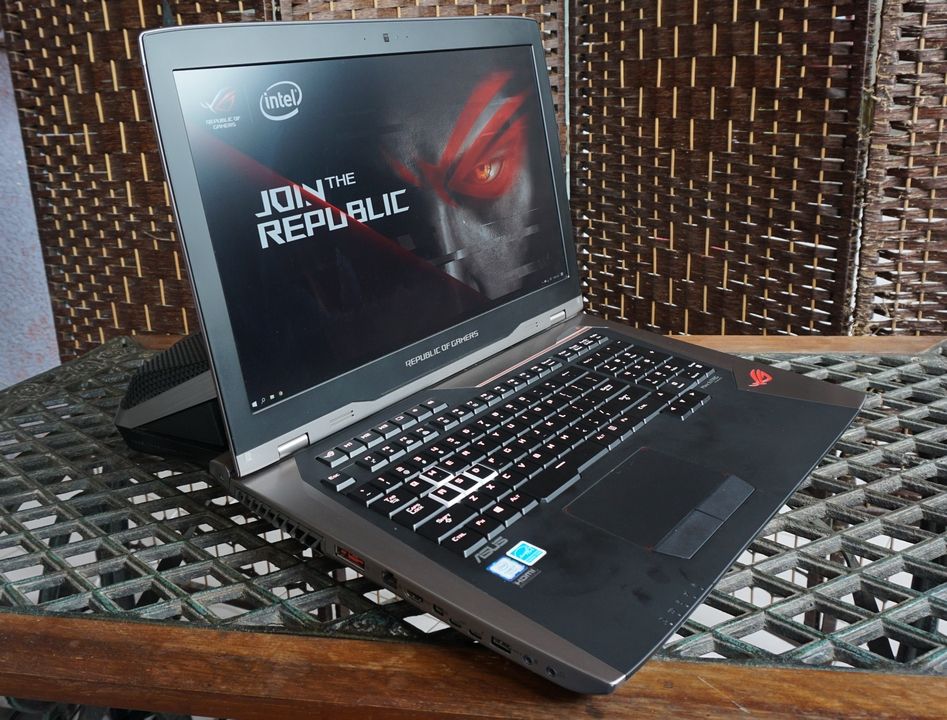
The ASUS ROG GX800 carries over the design of the equally insane GX700. The notebook (if it can be called a notebook) is clad in a brushed aluminum shell that’s cool to the touch and feels tough, which is good given that this is a USD 6,000 (PhP 369,995) device.

Aside from the ASUS ROG logo on the rear of the display, there are two RGB strips that lights up, which separates you from all the filthy casuals around.
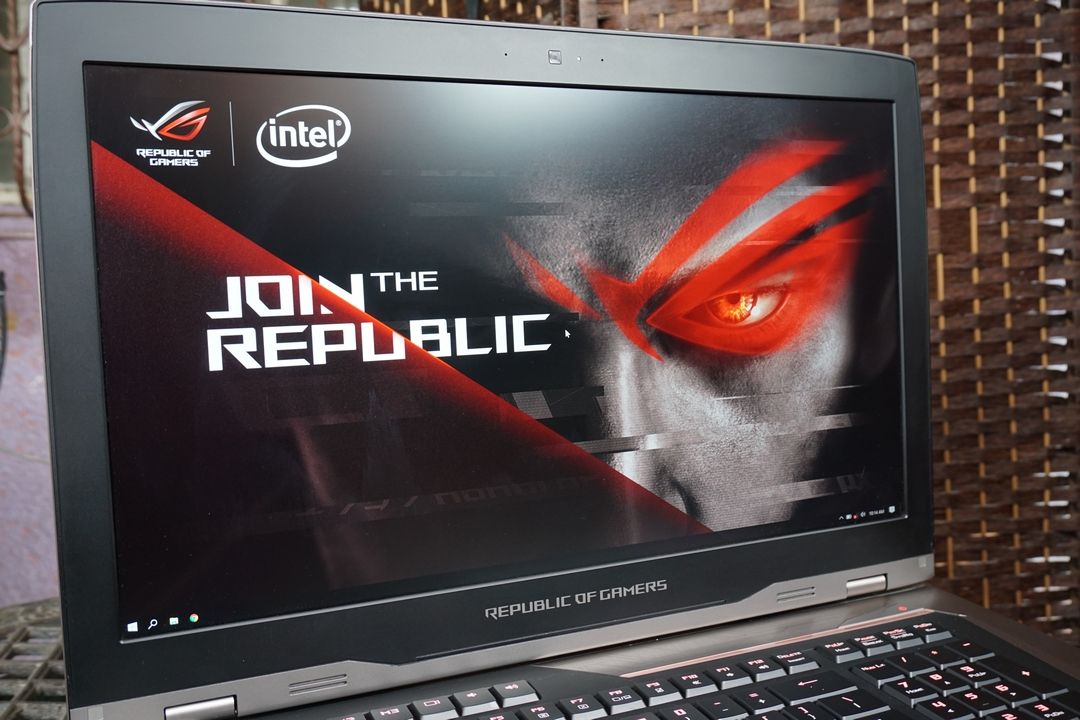
The GX800’s display is a 3840 x 2160, 60Hz IPS panel with NVIDIA G-Sync. At 18.4-inches, however, we would have preferred a 1440p, 144Hz or a 1080p, 144Hz panel instead since going to a resolution above 720p at this size won’t really affect the retina effect (meaning that you won’t the pixels at a certain distance increasing the perceived sharpness of the display). Since gaming is the top-most priority of the GX800, making the game feel more responsive will give you an edge in the battlefield compared to more beautiful graphics. Of course, you’ll still appreciate the pixel density and the sharpness of the display whenever you’re AAA games. In terms of viewing angles, the screen is an IPS panel so you shouldn’t experience any color shift when viewing the screen off-angle. Colors are also vibrant without being harsh on the eyes.
Pushing the UHD display are two desktop-class NVIDIA GeForce GTX 1080s in SLI configuration. The CPU, meanwhile is a 4-core, 8-thread Intel Core i7-7820HK overclocked to 4.4GHz (500MHz more than the stock 3.9GHz) complemented by 64GB of 2800MHz DDR4 RAM. The storage is handled by three 512GB PCIe x4 NVMe SSD in RAID 0 for a total of 1.5TB of space.

To further push the top-end components inside the GX800, ASUS has included a liquid cooling dock much like the one found on the GX700. Docking is an easy procedure. You’ll only need to line up the pins of the dock to the bottom of the GX800 and push the large lever on the dock. You’ll know that you’ve installed the dock correctly when the dock lights up.

Based on our observations, the dock is composed of two 140mm thick radiators to cool the innards of the notebook. What we have experienced, however, is that the internal fans stops spinning when the GX800 is docked to its liquid cooler. Thus, the whole system is relying on the cooling of the dock. It’s not entirely bad because the GX800 can continue operating at full speed.
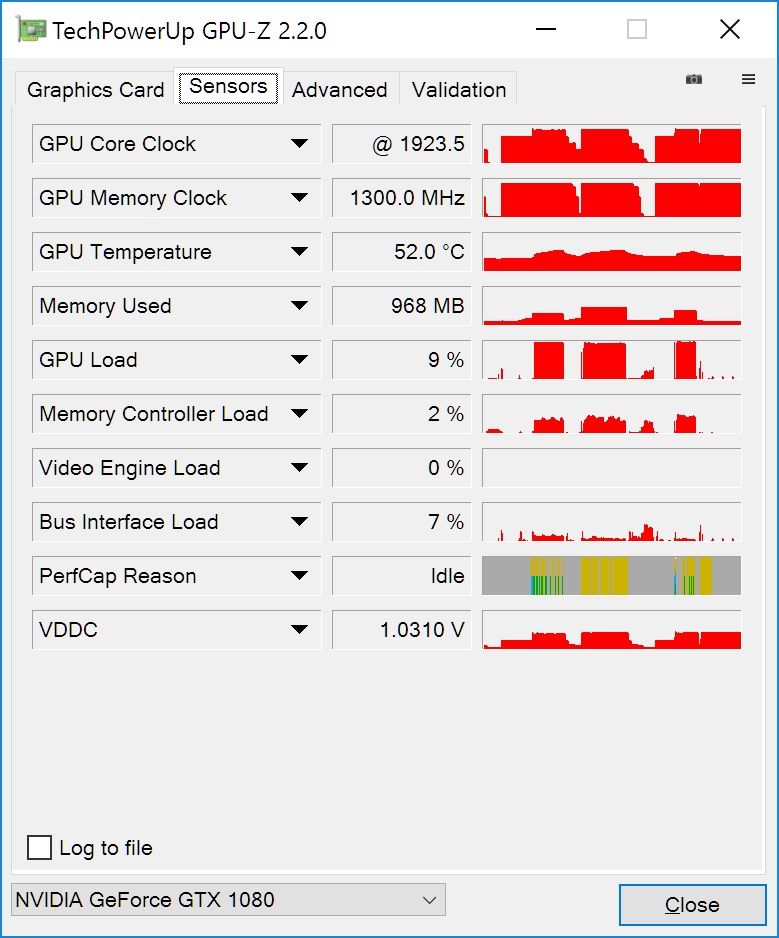
When the system is only running on air, we noticed that the i7-7820HK does have a tendency to lower its clock speed from time to time. When on liquid, however, the CPU is clocked at 4.4GHz the whole time the notebook was on. The GPU Boost clocks also improved reaching 1923MHz when cooled by the dock.
The GX800 comes with an ESS SABRE headphone DAC/AMP combo that provides clean audio given that you have a headset/headphone that can take advantage of an amplified signal. The speakers (two tweeters near the display and two full-range speakers at the bottom) of the GX800 do fairly well in a quiet room, but it does lack bass in both music and gaming. Frankly, though, we wouldn’t use a laptop’s speakers whenever we’re playing a game or pumping out tunes.
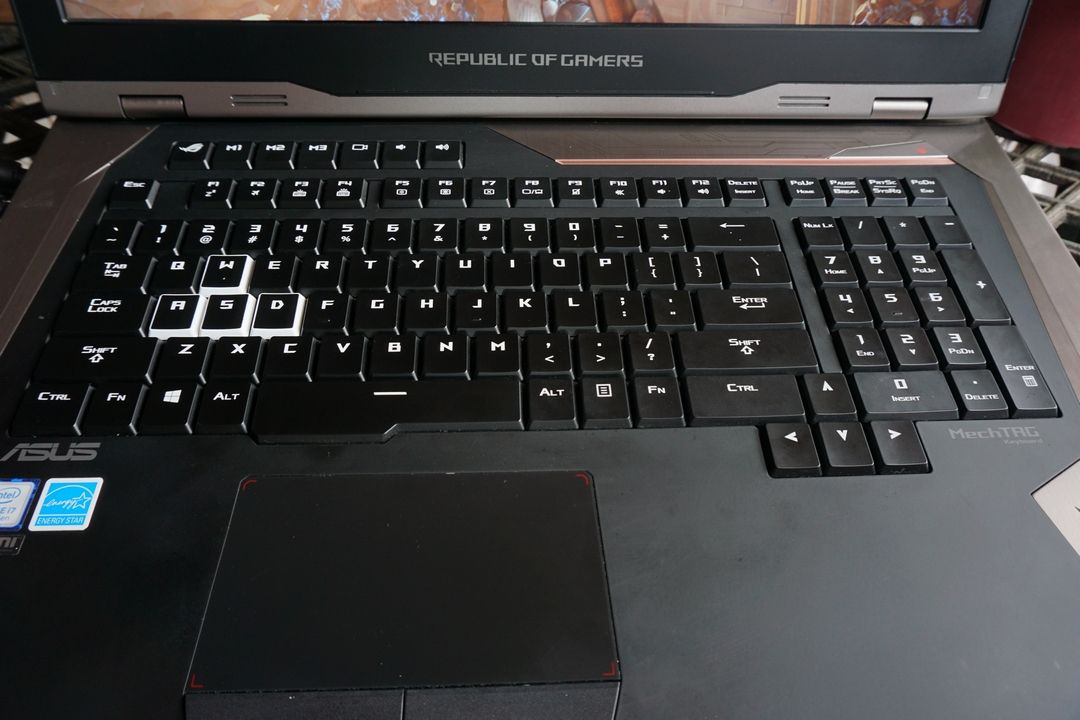
Another bragging feature of the ASUS ROG GX800 is its MechTAG keyboard. Essentially a low profile mechanical keyboard, MechTAG switches provides 2.5mm of travel with a “positive clicking action,” and Anti-ghosting for up to 30 keys. In our experience, however, it feels like a lighter MX Brown switch with an incredibly light bump in the middle. The bump is so light that it’s barely noticeable whenever you’re mashing the keyboard. It does give a better, more tactile experience compared to the usual Chiclet-style keyboard in laptops, but it isn’t a replacement for a full-fledged mechanical keyboard.
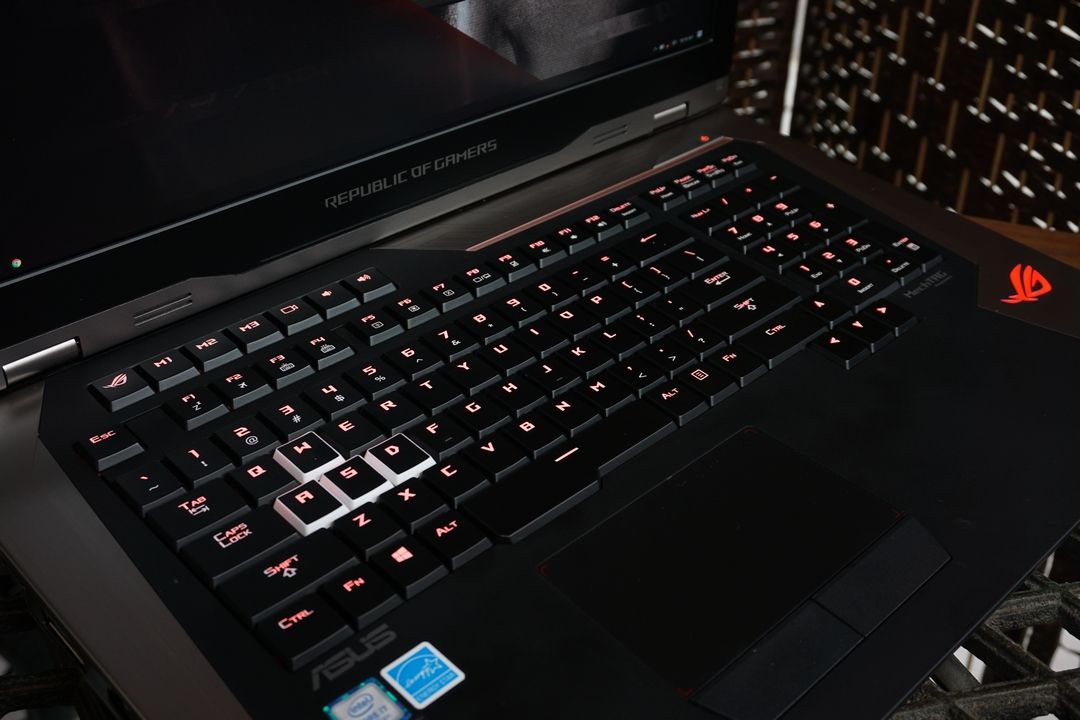
Of course, the MechTAG keyboard does have RGB lighting with dedicated macro keys and a customizable ROG shortcut.
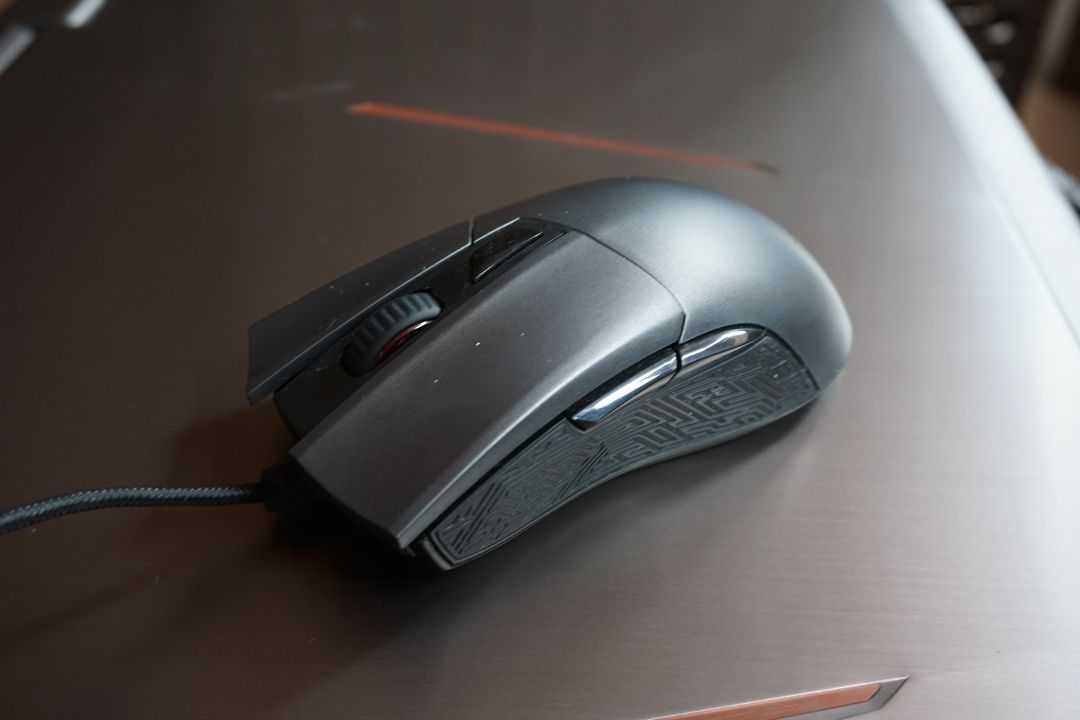
Paired with the MechTAG keyboard of the GX800 is ASUS’ own Gladius mouse, which is a decent mouse whenever you’re pawning n00bs on the digital battlefield.
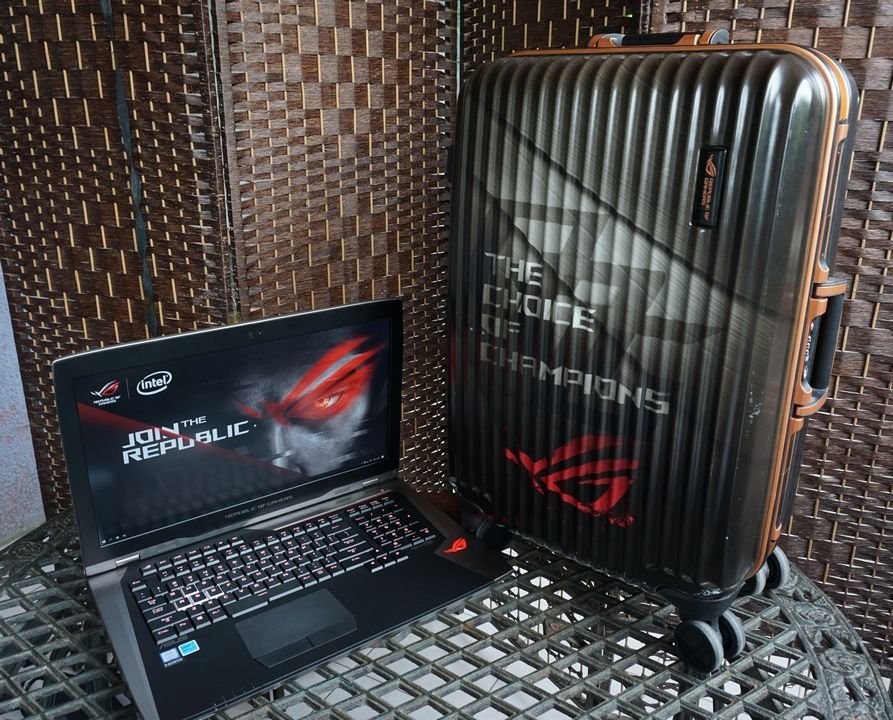
With the ASUS ROG GX800 weighing in at 5.7kg (not to mention the dock), it’s going to be a problem lugging this thing around. But ASUS has already thought of that. They have bundled a luggage case full of foam to protect the GX800, the dock, and the two 330-watt power bricks whenever you’re traveling around.
In terms of I/O, the GX800 has enough of them to rival a high-end desktop motherboard. At the left of the GX800 are an Ethernet port, an HDMI port, a mini DisplayPort, a USB 3.1 Gen1 Type-C port, a USB 3.1 Gen2 Thunderbolt port, a single USB 3.1 Gen1 Type-A port, and a headphone and microphone jack. The left is a bit less crowded with two USB 3.1 Gen1 Type-A ports, and a micro SDXC card reader.
Software
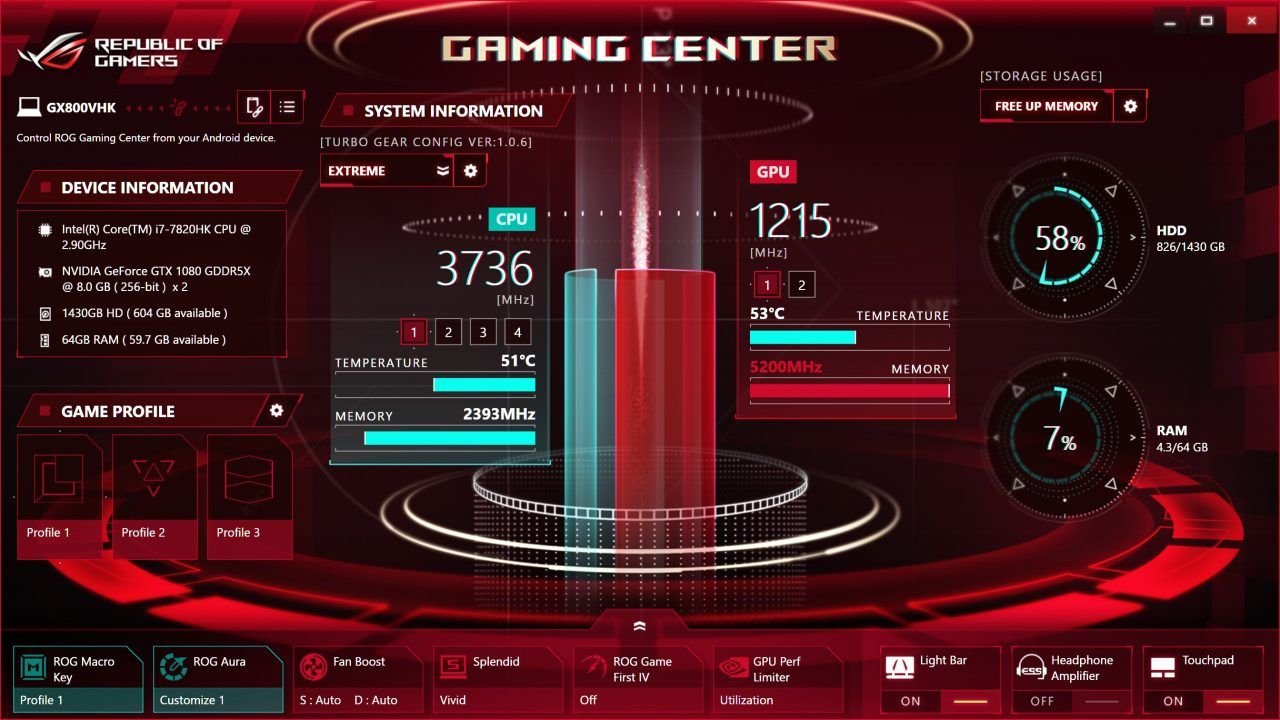
Most of the GX800’s functions can be controlled through ASUS’ Gaming Center. Device information and status is available, you can also configure the performance level you want the GX800 to run. As well as set several profiles and macros. Of course, the RGB lighting can be controlled through the Gaming Center.

You have a plethora of choices in the RGB lighting of the MechTAG keyboard. Aside from the preset designs, you can also individually choose the lighting you want for each key of the keyboard.
Battery Life
Errr… Battery life? What battery life?
Seriously though, you wouldn’t want to run the GX800 on battery alone. Based on our experience, we only got just under an hour playing games with the GX800 while on battery. For general usage, however, we were able to get around 2 hours (with the power saving option enabled). You might want to start finding a nearby plug whenever you’re using the GX800 on battery alone.
Benchmarks
Since this is still a laptop that’s built for all-around usage, we decided to test the whole system for general tasks, and of course, some gaming benchmarks as well. All benchmarks were run at high-performance in both air and liquid configurations.
As you can see on our gaming benchmarks, running games at UHD poses no problems with the GX800.
As we’ve said earlier, when docked, the GX800 turns off the internal fans and relies on the liquid cooling alone. Despite the higher temps while on liquid cooling, clock speeds are actually running at full speed with the CPU running at a steady 4.4GHz without throttling down. This is the same with the GPUs with both NVIDIA GeForce GTX 1080s peaking at a boost clock of 1923MHz.
Conclusion
As we’ve said, the ASUS ROG GX800 is priced at USD 6,000 or PhP 369,995. You do get a lot for such a high-price such as an overclockable Intel Core i7-7820HK, two NVIDIA GeForce GTX 1080s in SLI, 1.5TB of blistering NVMe storage, lots of I/O ports, an “almost” mechanical keyboard, and even a luggage bag to bring the GX800 around with you.
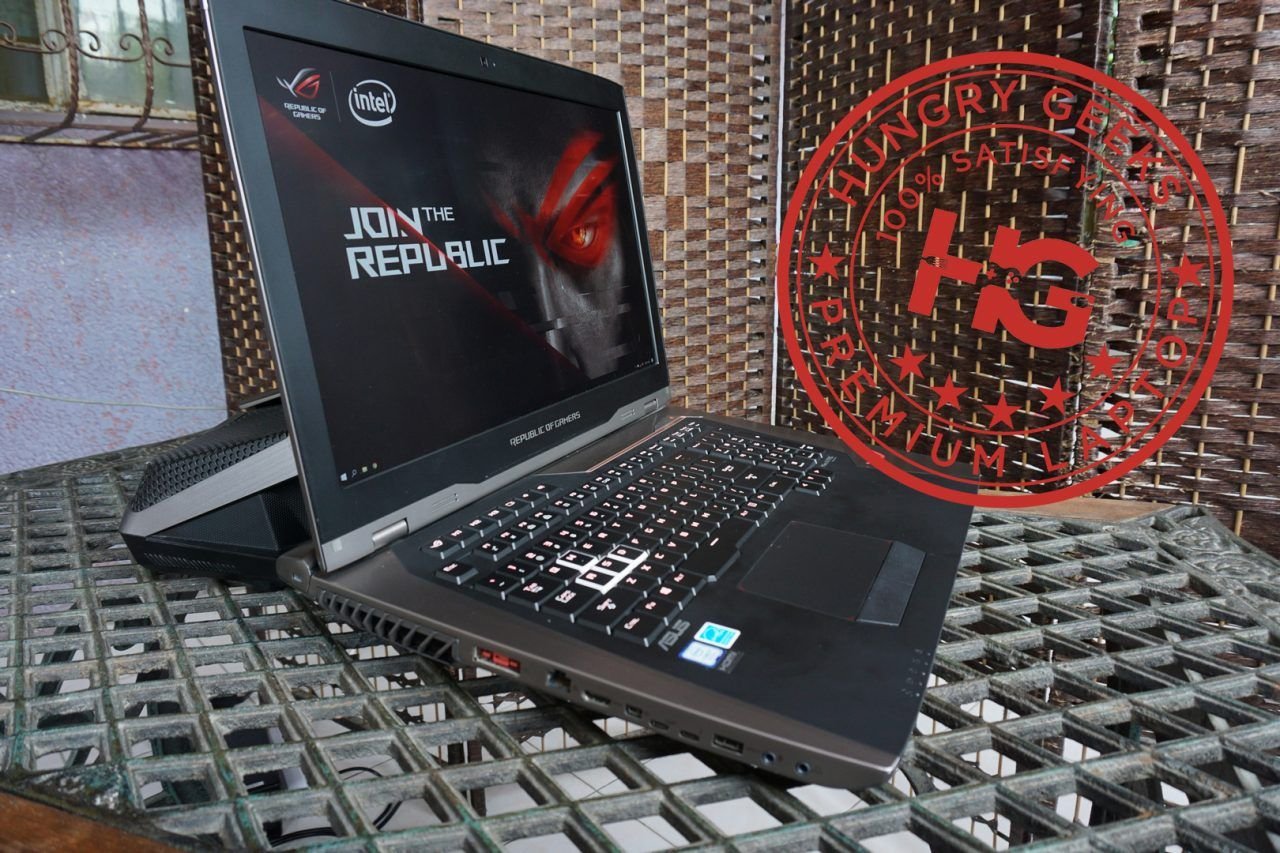
The ASUS ROG GX800 is one of the “reasonably” priced insane laptop with the Acer Predator 21 X at USD 9,000 (PhP 549,995) and the MSI GT83VR TITAN at USD 6,200 (around PhP 320,000). With its top-end specs, decent UHD display, liquid cooling, and overall beastly performance, we’re going to give the ASUS ROG GX800 the Hungry Geeks recommended seal of approval. If you have money to burn, then we believe it’s our job to gather in a chorus and shout “buy it, buy it, buy it!”
